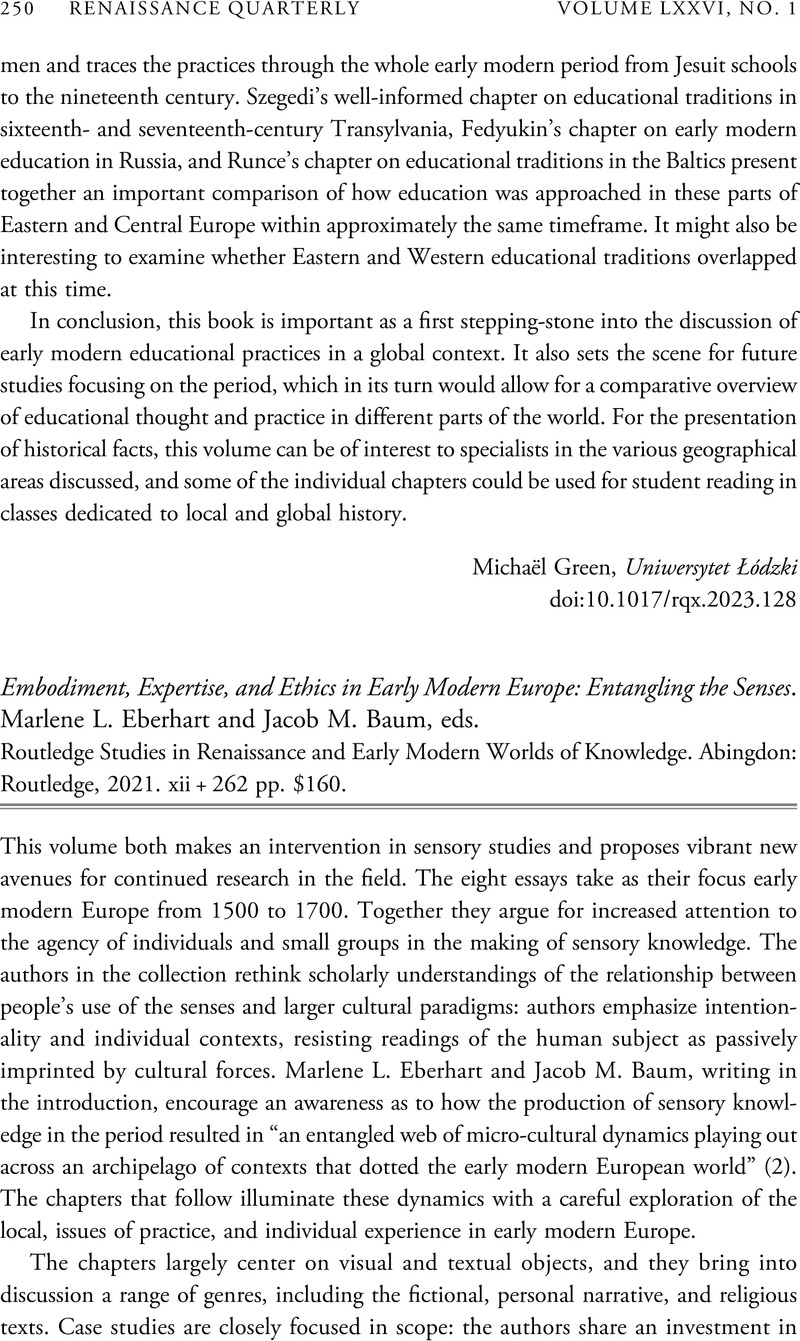No CrossRef data available.
Article contents
Embodiment, Expertise, and Ethics in Early Modern Europe: Entangling the Senses. Marlene L. Eberhart and Jacob M. Baum, eds. Routledge Studies in Renaissance and Early Modern Worlds of Knowledge. Abingdon: Routledge, 2021. xii + 262 pp. $160.
Review products
Embodiment, Expertise, and Ethics in Early Modern Europe: Entangling the Senses. Marlene L. Eberhart and Jacob M. Baum, eds. Routledge Studies in Renaissance and Early Modern Worlds of Knowledge. Abingdon: Routledge, 2021. xii + 262 pp. $160.
Published online by Cambridge University Press: 17 April 2023
Abstract
An abstract is not available for this content so a preview has been provided. Please use the Get access link above for information on how to access this content.

- Type
- Review
- Information
- Copyright
- Copyright © The Author(s), 2023. Published by the Renaissance Society of America



